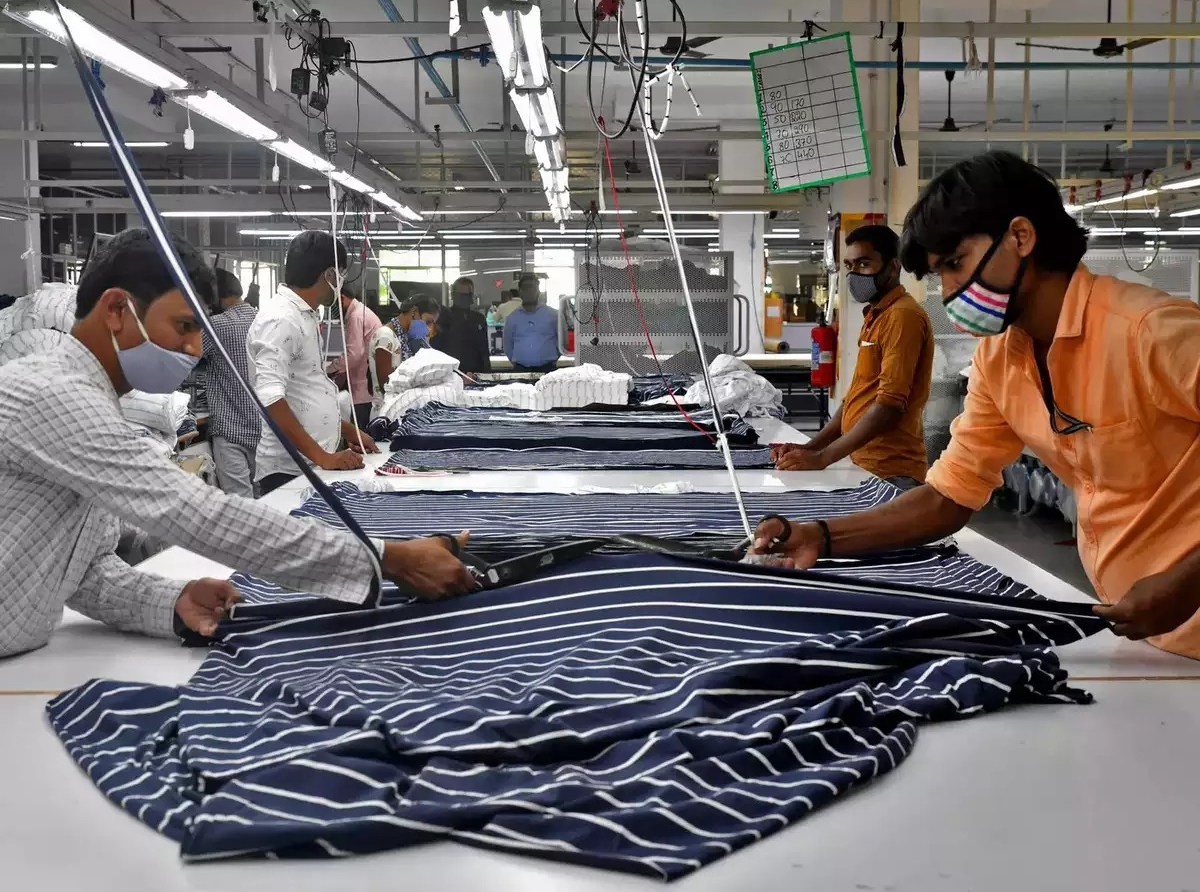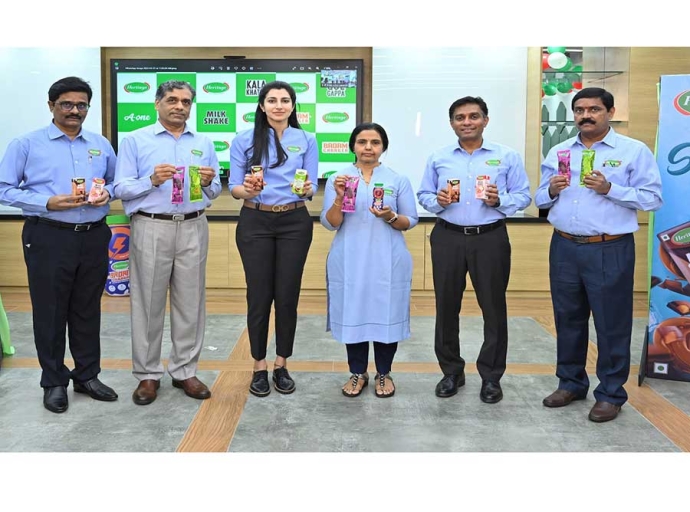27 February 2023, Mumbai
One of India's oldest businesses, Indian textiles have a rich history dating back to ancient times, with a diverse range of techniques and styles. The sector enjoys a clear-cut credible distinction of playing a considerable role in building India's economy and cultural identity.
The textile sector includes a variety of sub-sectors. The industry is split between a capital-intensive organized mill sector on one end and a hand-woven, unorganized part on the other.
Quick background
Indian textiles inherently offer a range of advantages, from enjoying a rich cultural heritage and vibrant diversity of designs to historically skilled craftsmanship, frugal cost-effectiveness, and an embedded spirit of sustainability. The country's plentiful availability of raw materials broadly being a complete supply chain, as in the larger scheme of things having cotton, silk, and jute, also adds to its competitive edge/advantage.
We have to state here that, Indian textiles have a global reputation for quality and durability, making them a preferred supplier/partner option among global buyers/consumers.
Factsheet
As per industry estimates second-largest employer in the country The world's largest producer of cotton and jute and the second-largest producer of silk The world's top producer of silk, man-made fibers Contribute around 5% of India's GDP and 15% of its total exports Contributes about 14% of industrial production and 3% of the nation's GDP Industry is responsible for up to 21% of all employment created in the economy
India exported $41 billion of textiles in the calendar year 2021, with a CAGR of 2.7 Contributing about 8% of the total excise taxes collected Exported $41 billion of textiles in the calendar year 2021, with a CAGR of 2.7 MoT has set a target before the sector to accomplish textiles exports of 100 billion USD & expects textile industry increasing to $250 billion in the next 5-7 years Sector boasts of 70 jobs for every crore rupee invested Technical textile industry is valued at ≈USD 19 billion and is expected to grow reasonably at 12% annually.
The textile industry's current market size as per reliable sources is worth USD 160~ Bn projected to hit 350 Bn by 2030 contributes ~ 2.3% to the nation's overall GDP, whilst accounting for a very significant 11% to India's total manufacturing GVA moreover what is not generally highlighted is the contribution accruing from a cotton sector that says roughly 6.5 million Farmers are engaged in Cotton Production
A solid 10% of the country’s total merchandise exports go by the overall exports basket of India. Technical textiles are one of the areas of this business that has drawn a lot of interest from all around the world. Technical or engineered textiles are used in various industries, including automotive, civil engineering and construction, agriculture, medical, transportation, industrial safety, sports, and personal protection, for practical rather than aesthetic reasons.
There are 12 categories of technical textiles based on usage. The production of technical materials mainly involves using specialty fibers like Nomex, Kevlar, Spandex, Glass, and Carbon, among others. These fibers have increased functional qualities, such as more extraordinary tenacity, superior insulation, heat resistance, chemical resistance, etc. These high-performance fibers are used in various industries and applications as a result.
Downside
Context setting; All is not hunky dory here in India's textile space, once upon a time the sector which was construed to be a global leader is losing its sheen/colour owing to ever-increasing competition and lack of innovations required to keep its growth and help maintain its existing status.
This does not surprise many given the backdrop of the Indian textile industry's declining/dwindling investments due to challenges key amongst them are increasing costs, use of outdated technology, and lack of skilled labor/reskilling/upskilling/new skilling.
Again, what is depressing is the unimpressive performance on attracting FDI as the industry has badly struggled to attract significant foreign direct investment (FDI) on account of falling to reform labor regulations and a lack of cutting-edge infrastructure, and the sector continues to be LAGGARD.
Differentiability
PLI Scheme for textiles is designed to fuel & spur the sector's growth prospects augmenting India's Textile Sector producing capabilities and harnessing exports' heft with an allocated capital outlay of Rs 10,683 crore through the next five-year period we have to stress here that it has been the game changer in some of the sectors where PLI schemes have been introduced.
The announcement of operating instructions for the PM Mega Integrated Textile Region and Apparel (PM MITRA) parks programs is another catalytic action undertaken by the government wherein, the parks' locations will be chosen based on five criteria: proximity to the site, existing textile ecosystem, utility availability, etc.
Ministry of Textiles' concerted efforts to skill the labour force in textiles and technical textiles value chain under SAMARTH is also a right scheme in the right direction.
RoDTEP for woven fabrics of artificial staple fibre's present treatment is as per the Ministry of Textiles (MoT) framework it has been raised up to 2.5% from hitherto prevailing rates of 1.2% which is a solid measure favoring the sector. The revised RoDTEP rates have been made effective in the time window of January 16, 2023, to September 30, 2023.
National Technical Textiles Mission (NTTM) The government cleared earlier 20 strategic projects worth 730 crores in the areas of specialty fibres and geotextile.
In the Union Budget 2023, an outlay allocation of ₹ 900 crores has been proposed for the textiles & apparel sector (T&C) under the Amended Technology Upgradation Fund Scheme (ATUFS).
Global tailwinds
Can India pull it off as the 'China Plus One Global Strategy' is putting India on an Upward Growth trajectory provided all the hands are on deck?
Prescription: Provided all the hands are on deck, as no choice but to elevate your game to global benchmarks.
There is unanimity amongst many trade experts/observers that an emerging geo-political situation where GSCs (Global Supply Chains) are looking to move away from undisputed industry leader China can be growth accretion leading to an increase of probably 7.5–10 million new jobs.
The argument rests on India's more deep strategic bench compared to Vietnam or Bangladesh, the optimistic view is say roughly $16 billion, which may come from the China Plus One sentiment down the road".
The market trends and the various challenges
Spotlight on technical textiles; According to estimates, India's technical textiles industry is expanding at a decent 12% annual pace. It is necessary to take a proactive approach to market expansion/go-to-market (GTM) strategy, promote the use of technical textiles in different government schemes and programs, and raise awareness among the populace and institutions in the nation to realize the potential for nearly 20% annual development in this sector.
The global market for technical textiles is predicted to increase from USD 177 billion in 2018 to USD 220 billion in 2022. With a 23% market share, the United States leads the globe in both production and consumption of technical textiles, followed by Western Europe (22%), China (13%), and Japan (7%). India accounts for around 4-5% of the global market for technical textiles.
With China as the market leader, Asia has emerged over the past ten years as a significant region for producing and consuming technical textiles. The other major participants in the Asian continent's technical textile industry are Korea, Japan, India, and Taiwan. Developing specialized high-performance fiber, advanced technology, and cutting-edge production facilities are expensive requirements for manufacturing technical textiles. China has already acknowledged the value of technical textiles for the home market and exports and has taken the required steps to develop significant capacity in this area.
How do the finances look
Domestic demand is also increasing in India. Indian businesses have begun creating technical fabrics for autos, safety-related materials like those used by troops in combat situations, ballistic fabrics, etc.
India's technical textile exports in 2021-22 have been on a steady rise, with significant growth in areas such as medical textiles, protective clothing, and geotextiles. India's technical textile exports in 2021-22 surged by 8.2% to reach $2.14 billion, driven by demand for medical textiles.
Piyush Goyal, ‘India eyes 5X exports of Technical Textiles from $2 bn to $10 bn' in 3 years
Technical textiles are in a sweat spot; the Indian technical textiles industry is expected to grow significantly in 2022-23. With increasing demand from sectors such as healthcare, automotive, and construction, the industry is projected to generate exports worth $40 billion by 2025.
This growth is driven by factors such as government initiatives, technological advancements, and rising consumer awareness about sustainable materials. Most of the MSME sector in India's technical textile industry needs foreign exposure to embrace new technologies and introduce them to the domestic market.
Utilizing cutting-edge technology, pursuing foreign partnerships and joint ventures (JVs), forging close ties with the nation's technical institutes, increasing investments, and expanding the domestic market to spur demand for technical textiles are some additional steps that must be taken for the sector to grow in the nation.
The debate of Traditional Textile Vs. technical Textiles
There is little doubt that there is a bullish outlook presently as Technical textiles are the growth enabler/kicker in the Indian textile sector. Again, considering their specialized properties, applications, and use cases they offer the differentiated potential for innovation, improvisation, and diversification.
Here it is imperative to mention traditional textiles, technical textiles cater to niche/specialized markets, and their collective demand is not impacted by fluctuations in fashion trends. Precisely this is what makes them a sustainable and profitable segment for the Indian textile industry per se.
Sum and substance
The article makes a case that, the Indian textile industry is not a sunset sector presently. As always it remains a bedrock of the nation's industrial landscape, with economic pie/GDP being a vital contributor to the generating jobs, economic kicker and multiplier Indian economy, and growth pillar/catalyst for foreign exchange earnings (FOREX) being a great example of Atam Nirbharta/Make in India theme.
Not to undermine the fact that the sector is facing challenges & threats such as competition from competing countries and muted & fluctuating global demand in the face of fragile global economic health.
Defensible; The good bit is that what we are excited about is that the industry has shown resilience/differentiable capability and adaptability, making significant strides in technology/digital adoption, embracing Industry 4.0 norms and sustainability measures is the call to action (CTA).
Latest Publications


































